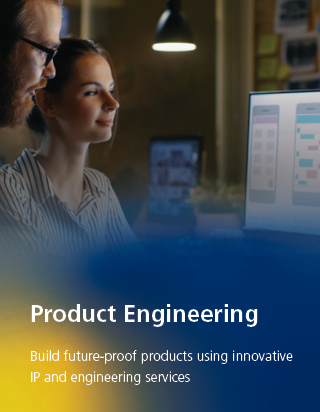Guarantee Task Success with Comprehensive Engineering Support: Setting Out Engineer Services, Topographical Surveying, and Extra
Guarantee Task Success with Comprehensive Engineering Support: Setting Out Engineer Services, Topographical Surveying, and Extra
Blog Article
Optimizing Source Allotment Through Strategic Surveying Practices
In the realm of strategic source allotment, the practice of checking stands as an essential device for companies aiming to enhance their effectiveness and influence. By methodically gathering understandings and information, tactical surveying practices provide a roadmap for educated decision-making and resource circulation. With the lens of stakeholder interaction, these studies give a means to tap right into the varied perspectives and requires that form a company's landscape. However, truth power of critical evaluating exists not just in data collection, yet in the capability to transform this details into actionable methods that push an organization in the direction of its goals. Via this lens, we begin to decipher the intricate interaction in between surveying techniques and resource optimization, establishing the phase for a much deeper exploration of the methods and tactics that underpin this crucial procedure.
Importance of Strategic Evaluating Practices
Strategic checking techniques play a vital role in figuring out the efficient allotment of resources within companies. By conducting tactical surveys, companies can collect important information and understandings that aid in making educated decisions regarding the allowance of sources such as time, manpower, and budget. These techniques supply a structured technique to recognizing the current state of the organization, determining areas for renovation, and lining up resources with tactical objectives.
One vital value of critical surveying techniques is that they help companies prioritize their initiatives based upon real-time feedback from stakeholders. This makes sure that sources are guided in the direction of jobs or tasks that have the highest possible effect on accomplishing organizational goals. In addition, tactical studies enable companies to adjust to transforming market problems, customer choices, and inner abilities by continually keeping track of and examining resource appropriation techniques.
Event Insights From Stakeholders
Including feedback from stakeholders is necessary for organizations applying strategic evaluating methods to efficiently allocate sources and drive decision-making procedures. Stakeholders, including workers, clients, distributors, and community members, hold useful understandings that can dramatically affect the success of critical efforts. Engineering surveys. Engaging with stakeholders with studies, interviews, emphasis groups, and feedback sessions permits companies to get a much deeper understanding of their requirements, concerns, and preferences
By collecting understandings from stakeholders, organizations can determine essential locations for enhancement, prioritize source allocation based on real requirements, and align calculated goals with stakeholder assumptions. Furthermore, entailing stakeholders in the decision-making process promotes a feeling of possession and commitment, bring about increased buy-in and assistance for tactical initiatives.
Additionally, stakeholders typically use distinct point of views and cutting-edge ideas that may not have been thought about inside. By actively paying attention to and including stakeholder feedback, organizations can enhance their tactical surveying methods, make even more educated decisions, and inevitably accomplish much better outcomes.
Utilizing Data-Driven Approaches
Making use of data-driven strategies is critical for organizations looking for to improve the efficiency of their resource allotment techniques and decision-making procedures. By leveraging data analytics and advanced modern technologies, organizations can extract useful insights to enhance source allocation, recognize patterns, and make notified decisions. Data-driven approaches make it possible for companies to allocate sources based on empirical proof as opposed to intuition, causing extra reliable and efficient results.

Furthermore, companies can use anticipating analytics to anticipate future look at these guys source needs and allot sources proactively. Topographical Surveying. By leveraging historic information and pattern analysis, organizations can anticipate need changes and readjust their resource appropriation approaches as necessary. Overall, welcoming data-driven techniques encourages organizations to make well-informed choices that maximize source allowance efficiency and drive lasting growth
Identifying Areas for Improvement
To improve functional efficiency and performance, organizations have to prioritize determining crucial areas for enhancement via extensive evaluation and evaluation. Determining areas for improvement is a vital action in the process of maximizing resource appropriation. By recognizing where traffic jams or inefficiencies exist within the company, decision-makers can guide resources towards dealing with these certain areas. This targeted approach makes sure that initiatives are concentrated on tasks that will yield the best return on financial investment.
One effective technique for identifying areas for renovation is performing regular efficiency analyses throughout different divisions or features. Through these assessments, organizations can gather valuable dig this insights into locations that require focus or restructuring. Furthermore, seeking responses from staff members in any way degrees of the organization can provide an unique perspective on potential areas for improvement.
Furthermore, making use of tools such as procedure mapping, SWOT analysis, and benchmarking can assist in identifying locations for renovation by highlighting toughness, weaknesses, chances, and hazards within more helpful hints the company. By methodically checking out these factors, companies can develop a thorough understanding of where resources should be designated to drive performance and efficiency.
Practical Tips for Implementation
Conclusion
In conclusion, tactical surveying methods play an essential duty in optimizing resource allocation by gathering insights from stakeholders, utilizing data-driven strategies, and identifying locations for enhancement. Executing sensible tips for reliable surveying can bring about more educated decision-making and optimized source appropriation strategies. By focusing on calculated checking techniques, companies can make sure that resources are designated efficiently and efficiently to meet their goals and objectives.
In the world of strategic source allocation, the practice of evaluating stands as an essential tool for organizations intending to optimize their performance and influence.Strategic surveying methods play an essential duty in establishing the effective allotment of resources within companies.Including feedback from stakeholders is important for organizations applying strategic surveying practices to efficiently designate resources and drive decision-making processes.Additionally, organizations can utilize predictive analytics to anticipate future source requirements and designate sources proactively. By focusing on calculated evaluating methods, organizations can make certain that resources are designated effectively and properly to meet their goals and purposes.
Report this page